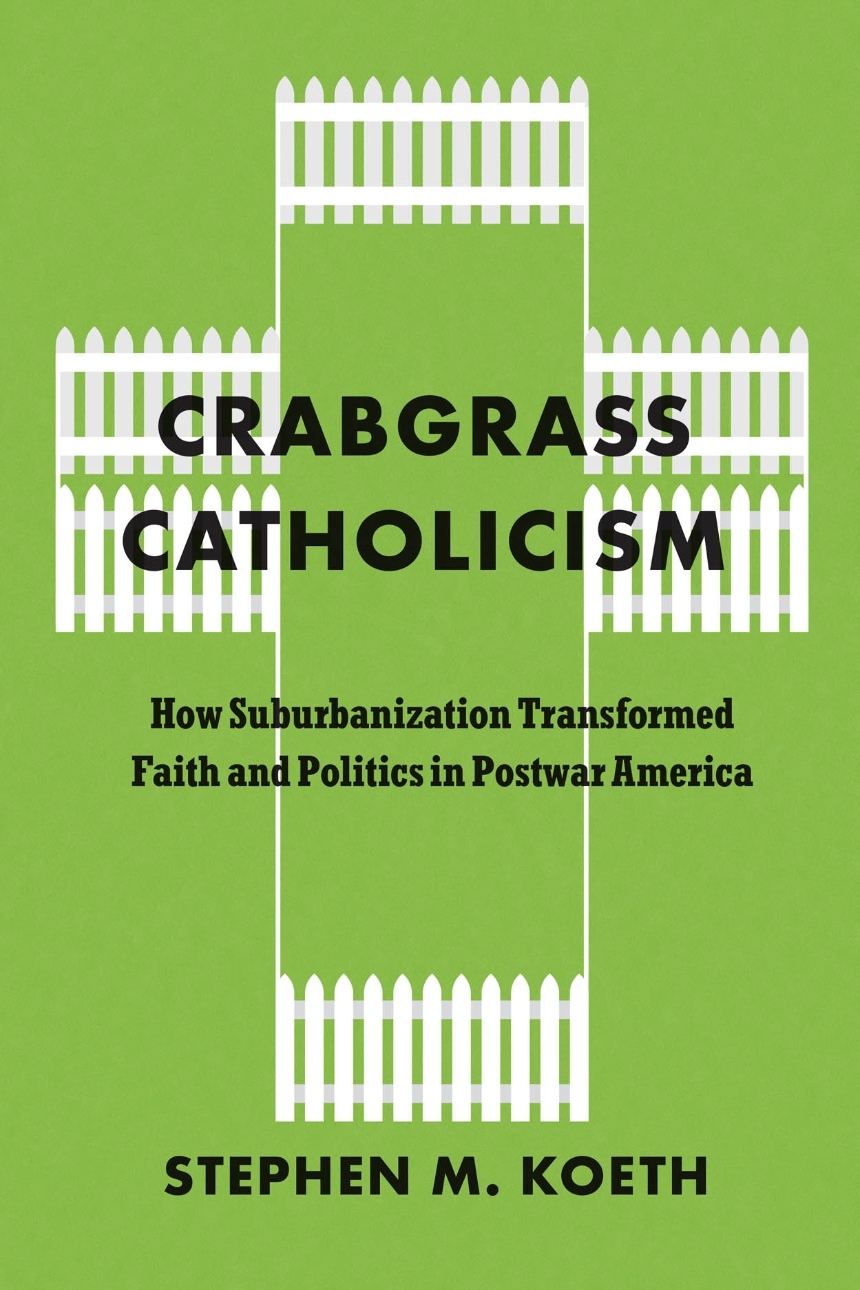Crabgrass Catholicism
How Suburbanization Transformed Faith and Politics in Postwar America
9780226842202
9780226829968
9780226842196
Crabgrass Catholicism
How Suburbanization Transformed Faith and Politics in Postwar America
How suburbanization was a crucial catalyst for reforms in the Catholic Church.
The 1960s in America were a time of revolt against the stifling conformism embodied in the sprawling, uniform suburbs of the 1950s. Typically, the reforms of the Catholic Church’s Second Vatican Council, which aimed to make the Church more modern and accessible, are seen as one result of that broader cultural liberalization. Yet in Crabgrass Catholicism, Stephen M. Koeth demonstrates that the liberalization of the Church was instead the product of the mass suburbanization that began some fifteen years earlier. Koeth argues that postwar suburbanization revolutionized the Catholic parish, the relationship between clergy and laity, conceptions of parochial education, and Catholic participation in US politics, and thereby was a significant factor in the religious disaffiliation that only accelerated in subsequent decades.
A novel exploration of the role of Catholics in postwar suburbanization, Crabgrass Catholicism will be of particular interest to urban historians, scholars of American Catholicism and religious studies, and Catholic clergy and laity.
The 1960s in America were a time of revolt against the stifling conformism embodied in the sprawling, uniform suburbs of the 1950s. Typically, the reforms of the Catholic Church’s Second Vatican Council, which aimed to make the Church more modern and accessible, are seen as one result of that broader cultural liberalization. Yet in Crabgrass Catholicism, Stephen M. Koeth demonstrates that the liberalization of the Church was instead the product of the mass suburbanization that began some fifteen years earlier. Koeth argues that postwar suburbanization revolutionized the Catholic parish, the relationship between clergy and laity, conceptions of parochial education, and Catholic participation in US politics, and thereby was a significant factor in the religious disaffiliation that only accelerated in subsequent decades.
A novel exploration of the role of Catholics in postwar suburbanization, Crabgrass Catholicism will be of particular interest to urban historians, scholars of American Catholicism and religious studies, and Catholic clergy and laity.
328 pages | 25 halftones, 8 line drawings, 2 tables | 6 x 9 | © 2025
Historical Studies of Urban America
History: American History, Urban History
Religion: American Religions
Reviews
Table of Contents
List of Abbreviations
List of Figures and Tables
Introduction
1. An Urban Catholic World: Agrarianism, Urbanism, and the Ethnic Parish
2. The Suburban Church: Postwar Suburbanization and Catholic Institutional Expansion
3. From Church to Home: Spaces for Prayer, Education, and Charity in the Suburban Parish
4. Priests and Parishioners: Lay Associations, Parish Councils, and Church Leadership
5. Suburban Parish Boundaries: Race, Ethnicity, and Mixed Parishes in Suburbia
6. Suburban Catholic Education: Parochial Schools, CCD, and Ecclesiastical Polarization
7. Politics in Catholic Suburbia: State Funding, School Prayer, and Political Realignment
Epilogue: The Suburban Church and Religious Disaffiliation
Acknowledgments
Appendix
Notes
Index
List of Figures and Tables
Introduction
1. An Urban Catholic World: Agrarianism, Urbanism, and the Ethnic Parish
2. The Suburban Church: Postwar Suburbanization and Catholic Institutional Expansion
3. From Church to Home: Spaces for Prayer, Education, and Charity in the Suburban Parish
4. Priests and Parishioners: Lay Associations, Parish Councils, and Church Leadership
5. Suburban Parish Boundaries: Race, Ethnicity, and Mixed Parishes in Suburbia
6. Suburban Catholic Education: Parochial Schools, CCD, and Ecclesiastical Polarization
7. Politics in Catholic Suburbia: State Funding, School Prayer, and Political Realignment
Epilogue: The Suburban Church and Religious Disaffiliation
Acknowledgments
Appendix
Notes
Index
